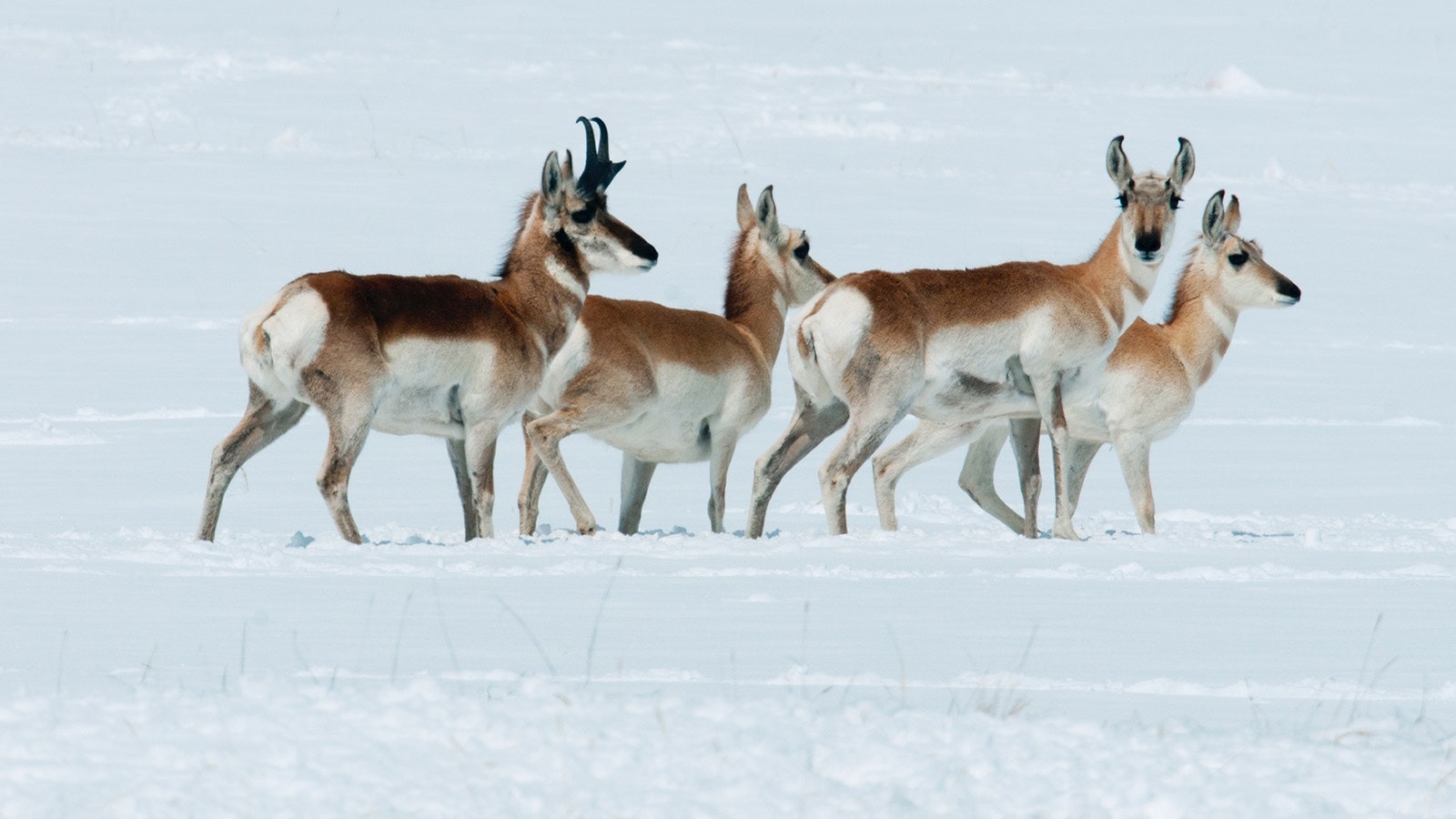With the ultimate antelope death toll from the worst winter in recent memory still unknown, game managers Tuesday agreed to cut more than 10,000 hunting tags for the struggling herds this fall.
The Wyoming Game and Fish Department offered 41,145 antelope tags for the 2022 season. This year, 30,855, or 10,290 fewer, will be available for limited quota drawings for the fall hunting seasons.
There also will be some cuts to tags for mule deer, though not nearly as dramatic, amounting to about 4,000 fewer limited quota tags. In some areas, the number of tags for whitetail deer should increase.
“You’re going to see significant reductions, even in opportunities for bucks, in those areas that were most affected,” agency director Brian Nesvik told members of the Wyoming Game and Fish Commission.
The commission sets hunting seasons and tag quotas, and on Tuesday accepted Game and Fish’s recommendations for changes to fall 2023 deer and antelope seasons.

Brutal Winter
This winter has been brutally hard on mule deer and antelope, especially in Carbon, Sublette and Sweetwater counties, which are home to some world-class herds of both species.
To make matters worse, a rare strain of pneumonia also has killed hundreds more antelope between Pinedale and Rock Springs, Nesvik said, although the outbreak so far appears to be contained to only that area.
The total number of animals that have starved or frozen to death this winter remains unknown, he said. However, in one radio-collared study group, 60% of the adult animals and 95% of the fawns died.
This winter has been particularly bad because the herds’ winter range in the Red Desert, the Baggs area and elsewhere was hammered with unusually deep snowfall.
It partially melted and then refroze between hot and cold spells, leaving a hardened crust that trapped animals in place. They were unable to paw through to get to buried forage.
Differing Views
Hunters and outfitters who commented during the meeting largely supported the idea of scaling hunting seasons back in the wake of massive winterkill, but had some different views about the details.
Bruce Lawson said that trimming deer tag allocations and shortening hunting seasons in some areas doesn’t go far enough.
Describing a recent drive through the Muddy Gap area and on through Baggs and into Colorado, he said that, “I looked out and could see just specks of mule deer in a sea of white.”
In southcentral Wyoming, some seasons should be canceled, he said.
“Close it, totally. Let’s give these deer a break,” he said.
Fellow deer hunter Logan Hicks said he agreed that seasons should be cut back, but not shut down. Bucks can still be hunted without hurting the herds’ chances to bounce back, he said.
“Hunting male mule deer, or male anything, isn’t going to have that big of an effect on herds,” he said.
Dave Allen said that as the owner of a car wash and small outfitting business, cutting tags too deep could hurt because deer seasons are typically “my busiest time of the year.”
There was also some concern expressed over how predators could affect already depleted game herds.
Jess Johnson, spokeswoman for the Wyoming Wildlife Federation, said the long-term focus should be on improving deer and antelope habitat.
“Habitat, habitat, habitat,” she said. “Yes, worry about predators, but worry about habitat more.”
Those Pesky Whitetails
Boosts in the number of tags available for whitetail deer in some areas were well-received.
Though smaller than mule deer, whitetails can be more adaptable. They can also enter mule deer habitat, said rancher and Wyoming Senate President Sen. Ogden Driskill, R-Devils Tower.
“Any area where you don’t keep the pressure on them, the whitetail will follow and take over mule deer habitat,” he said.
A bill proposing that Game and Fish manage mule deer and whitetail deer hunting seasons separately failed before the Legislature earlier this year. However, Driskill said the agency should still consider pushing for that change.
“We don’t put antelope and elk together (in hunting management), and mule deer and whitetail are different species,” he said.
Whitetails have been prolific in the Black Hills region where he lives, Driskill said, and he welcomes seeing them hunted more aggressively there.





